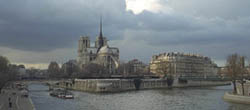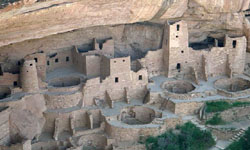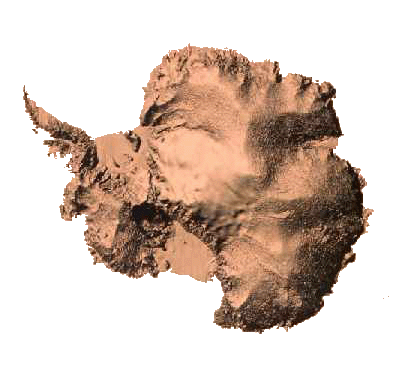Antarctica

A Complete Guide to its History, People, Cities and Culture



Photo Credits, top to bottom: Delphia, the city where visitors first arrive on the continent; Semei, on the northeast coast of Antarctica, known for its seafood, computer language industry and telekinesis experiments; Balloonists pass above the green hills surrounding Delphia, on their way back to the city; Detail of the ruins at Mimosa, where the most famous battle in Antarctican history occurred in 1403 B.C.
BUY MY BOOKS | HOME | FICTION | ESSAYS | ON-LINE DIARY | MARGINALIA | GALLERY | INTERACTIVE FEATURES | FAQ | SEARCH ENGINE | LINKS | CONTACT
www.ralphrobertmoore.com
the official website for the writings of
ralph robert moore

Fauna
Beginning in 3,500 BC, it was the practice of Antarctican sailors, gliding around the world, to trade for animals native to the regions where they docked. These beasts would then be floated back to Antarctica, and released in the wild to increase the diversity of life on the continent. Although this practice might now seem dangerous, given our knowledge of the disruptive effects which can be brought about by introducing a new species into a balanced ecosystem, particularly if the new species has no natural predator within that ecosystem, the impact of the practice appears to have had little deleterious effect in Antarctica, either for reasons of incredible luck, or perhaps because the Antarcticans were simply more skilled at such introductions. Antarctica does not have the walking catfish, creeping kudzu problems so prevalent elsewhere.
The practice of the ancient Antarctican sailors, and the degree of success of their bartered animals' integration within the local ecosystem, does make it difficult today, however, for those of us studying Antarctica "from the outside", to determine which animals are native to Antarctica, and which clopped or flapped off one of the thousands of returning Antarctican sailing vessels. At this point in the studies that are sure to absorb zoologists for decades, there has been a tentative agreement to at least treat as native those creatures that are found in Antarctica, but nowhere else on the planet.
Chief among these is the elf (no apparent relation to the imaginary creature bearing the same name in English), a cat-like monkey whose mature size ranges from one foot to one yard, depending upon the subspecies, and which can be found in nearly all temperate areas of the continent (they are not found outside cities in the northern extremes of the nation). Elfs, as the plural is spelled, generally walk on all fours, although they can stand on their hind legs, with grasping, opposable-thumb front paws (the rear paws are clawed; in most sub-species the front paws are clawed at birth, but the claws eventually drop off as the animal matures). Elfs come in a remarkable range of fur markings, and in this and the triangular, forward projection of their faces (as opposed to the flat faces of most simians), most clearly reveal their feline influence. Their tails are usually quite long, often as long as the length of their body, and are used for both communication and grasping. Of all the animals existing in Antarctica, the elf is considered one of the most intelligent, and most human-like, and indeed nearly all Antarcticans live with one or several elfs. Their lifespan is normally somewhat shorter than Antarcticans.
The term "elf" is one of the five concepts (please see Beliefs).
It is a contention of the Antarcticans, as yet unproved by non-Antarcticans, that they and elfs descend from a common ancestor. As part of this belief, the Antarcticans point to the existence (as yet unverified by outside researchers) of the notisas, a race the Antarcticans claim they are directly descended from, and who, they claim, live within the Great Hollow area of the continent. The notisas are said to be of equal parts cat, human and simian, walking upright, covered in beautifully marked fur, who live in the wild but are intelligent creatures with their own culture and civilization (the notisas are said to have created the Antarctican language bus). It is not possible, of course, this early in Antarctican studies, to confidently separate myth from reality, although it would seem almost certain that we are simply misunderstanding the Antarcticans, or they us, when they speak seriously of the existence of the notisas. It should be noted that the Antarcticans also claim the Great Hollow is host to abundant herds of dinosaur, such as have been extinct elsewhere in the world for millions of years. This is so extravagant a claim, and yet made so casually during conversation, that it is hard to know what to make of it until proper research can be carried out.
While we are on the subject of questionable statements, it is probably appropriate here to speak of Val, a region of Antarctica usually visited by Antarcticans only once or twice in their lives, for reasons we don't yet know, where the trees supposedly grow so closely together that one must inch carefully around them, and where, so the Antarcticans claim, live a variety of animals, some quite ordinary, others less so, that speak. It appears from what Antarcticans have said on this subject that when they refer to the animals as speaking, they mean actual vocalization, rather than using the term "speak" in any metaphorical sense. Again, judgement must be reserved for now.
Even if all the Antarcticans' claims about the notisas, still-extant dinosaurs, and talking animals prove to be a comical misunderstanding, there is still such an abundance and diversity of animal life on the continent that their absence would hardly be noticed. Even in the cities, it is not unusual to occasionally see animals roaming about, whether it be giraffes pulling leaves off a tree outside a theatre, or a pair of Bengal tigers sunning themselves on the corner of a terrace. The sight of certain animals, such as tigers, hawks and rhinoceroses being so near to one, and without any restraints, is at first frightening to an outsider, who of course expects the worse, but these animals have apparently lived among the Antarcticans for so many thousands of years now that there are never any dangers of an attack. Once a visitor is assured of this, it can be very pleasant to have such animals nearby. The present writer recalls one morning having coffee at an outside café in Suh, along the Western shore, going over his notes, and looking up from buttering a roll to see a small procession of black and white pandas ambling past on their way to the river.
Lepidopterists are especially keen to visit the continent because of its magnificent abundance of butterflies. One sees them everywhere in Antarctica, even, often, inside. And of course one of the most popular weekend vacations is Butterfly Bay on the western shore. Along with butterflies, other insects found in Antarctica are several species of non-stinging ant, including the bean ant, which builds elaborate, mathematically precise mazes aboveground, with maze walls up to a half-inch high, a wide variety of bees, hornets and wasps, not known to sting humans (they prefer to sting each other), several tank battalions of different species of beetle, the largest of which is the size of a brightly-painted thumbnail, and a garden's variety of spiders, all of which are web weavers, and all but one of which, the palm spider, are harmless. The palm spider, which grows to the size of a child's palm, making it the largest insect in Antarctica, is found only in the Qualye region, a small, dense rain forest of approximately one hundred square miles located inland from the southeastern shore of Antarctica. The spiders live high up in the xitaxis, a member of the Palmae family unique to Antarctica, with arborescent habit, and drop on people as they pass under the tree, scurrying off their heads down their arm to their hand, where they place a venomous bite in the palm. Although the individual bitten is unaffected, he or she then becomes a carrier for buzzereet, the disease spread by the palm spider's saliva. The first person the host individual comes in contact with who touches the wound contracts buzzereet, a nonfatal disease which causes the victim to have delusions that he or she does not exist. Symptoms last approximately one week. If the host avoids having his palm come in contact with any other person for six months, the virus dies and the disease is no longer transmittable. The palm spider is considered the only dangerous animal in Antarctica. People avoid it by simply not visiting that small, remote region. There are no cockroaches in Antarctica (it is in fact the only area on earth without cockroaches), and no flies, fleas, ticks, centipedes or millipedes. Worms are nicely distributed in the rich, dark soil.
Those who dislike them have asked if there are snakes in Antarctica, and it must be honestly reported that there are; however, all the snakes on the continent are herbivorous, fangless, and quite harmless to humans. Lengths vary from under a foot to a little over three feet. They tend to be shy around humans, although they can sometimes be coaxed out from under a bush with a bunch of grapes, their preferred food. Of reptiles and amphibians in general there are a variety, but mostly small garden lizards, non-snapping turtles, and chameleons. All are non-poisonous.
Birds are everywhere in Antarctica, even in the colder climes to the north. Nearly all of them will be familiar to outsiders, including cardinals, blue birds, robins, parakeets, parrots, cockatoos, finches, peacocks, and eagles.
Sea life is plentiful, so much so that Antarcticans frequently stop by the crystal clear shore on their way home and spend a moment catching their own dinners. Lobster comes in several varieties, including the Antarctican Blue Lobster, which has thicker sidelegs than its Atlantic cousin, and is considered to have a sweeter, more pleasing taste. Shrimp is everywhere, as are scallops, periwinkles and crab. Clams and oysters are also quite plentiful (mussels are found only along the northern shores). The Wem is a fish unique to Antarctica: it has no bones or scales, and is therefore easy to prepare for a late Friday night meal. Other fish present in the seas include tuna, snapper, flounder, halibut and sea bass; and in the many lakes, rivers and streams of Antarctica, trout and salmon. Whales, sea lions, penguins and seals are frequently seen along the shores. There are no sharks in Antarctica's waters.
print this article